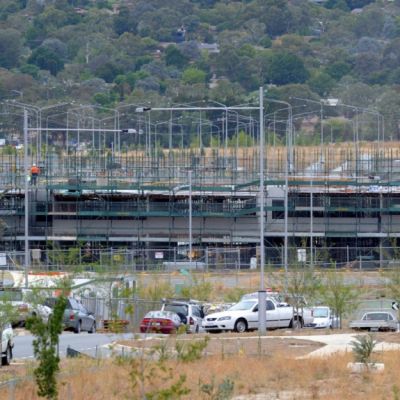House construction on the rise as units decline in Canberra: report
Detached house builds are on the rise in Canberra but unit construction is expected to decline, according to a new report from the Housing Industry Association.
The summer 2017 edition of the association’s ACT Outlook, released on Friday, shows construction of a record 4076 apartments commenced in Canberra during the 2015/16 financial year, representing an annual increase of 62.1 per cent.
However, a substantial decline of 36.7 per cent is anticipated for 2016/17.
The financial year began with a marked decline in the September 2016 quarter, when construction started on just 451 units.
By contrast, detached house builds dropped to 1055 in 2015/16, but a 13.2 per cent turnaround was recorded in the September 2016 quarter.
Growth of 37.8 per cent is anticipated for the detached housing market in 2016/17.
HIA ACT executive director Greg Weller said these conditions would continue for the next couple of years, driven by land releases in new suburbs.
“The percentage of houses as a total of new dwellings being built was 20 per cent in 2015/16,” Mr Weller said.
“We’re expecting to see that head up to 43 per cent in 2017/18 and stay at around that figure for the years beyond.
“It’s a much more sustainable position for home building in the ACT. There remains a strong demand for detached homes and it’s important that we keep the supply of land in the pipeline strong so that demand can be met.”
Despite a decline in new apartment starts, several developments are currently under construction and due for completion over the next couple of years.
The report also noted accelerated price growth in Canberra, with the price of detached dwellings rising 9.6 per cent in 2016.
“We’ve seen price growth in Canberra looking like what we’ve seen in Sydney and Melbourne,” Mr Weller said.
“It does present a big challenge for first home buyers looking to get into that part of the market.
“But that price growth has been very positive for the renovation market. Strong house price growth gives people more equity and the rising market may put them off moving to a new home and instead borrow some of the equity in their home to renovate.
“We are expecting renovations will be one of the stars on the market in the coming years.”
Mr Weller said the only sustainable solution for tackling housing affordability was to address taxes.
“Right now the industry is staring down the barrel of a large new tax from Icon Water on developments for water and sewerage, which is a prime example of why affordability is a problem,” he said.
We recommend
We thought you might like
States
Capital Cities
Capital Cities - Rentals
Popular Areas
Allhomes
More










